How To Improve Posture: A Guide To Alleviate Neck Pain
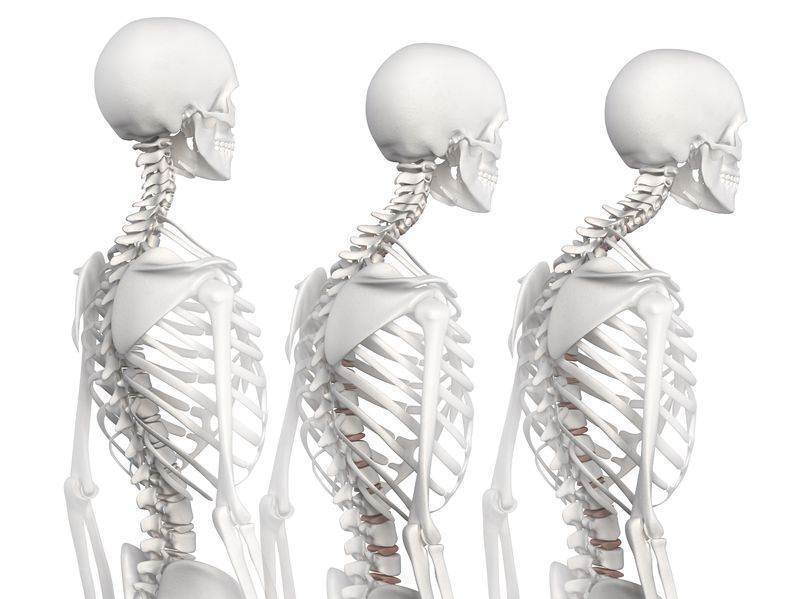
How to Improve posture, especially for those experiencing neck pain, stiffness, and headaches due to a rounded upper back, is crucial for overall well-being and confidence. This guide outlines effective strategies to address the common issue of a rounded upper back prevalent in today’s sedentary lifestyle.
Understanding the Cause: Muscle Imbalance
A rounded upper back often stems from muscle imbalance, with chest muscles being overly tight and the muscles along the spine too weak.
Stretching and Strengthing Is The Answer: How To Improve Posture
1. Stretching the Chest Muscle

Pectoralis Minor Stretch
- Stand at a corner or doorway opening with your arm at shoulder height.
- Step forward.
- Rotate your body away if you don’t feel a stretch.
- Stretch for 30-60 seconds 3 times.
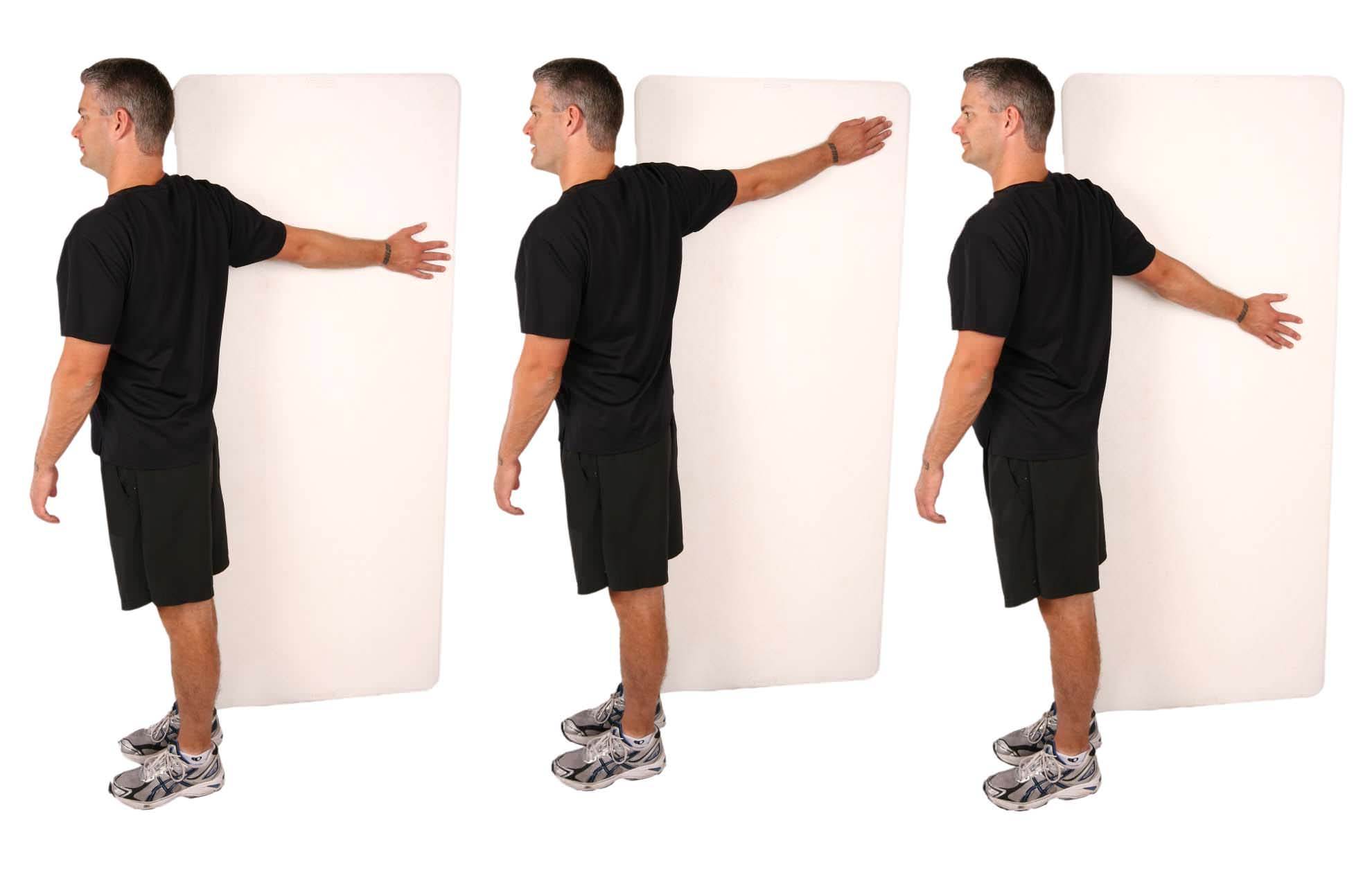
Pectoralis Major Stretch
- Stand next to the wall and extend your arm back.
- Rotate your body away from the wall.
- Stretch for 30 -60 seconds 3 times.
See Also: The 5 Best Exercises For Your Stiff Neck
2. Strengthening the Upper Back: How To Improve Posture
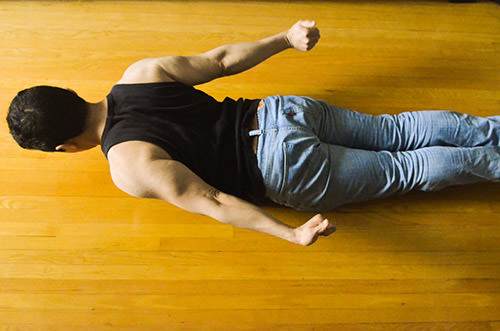
- Lie facedown on the floor.
- Contract your gluteus maximus (butt muscles) and raise your chest and arms off the floor.
- Point your thumbs toward the ceiling.
- Bring your shoulder blades together with a hard contraction, while pushing them toward your tailbone.
- Hold for 10 seconds 3 times. Work your way up to a total time of 60 seconds without rest.
3. Stretching Upper Back Ligaments: How To Improve Posture
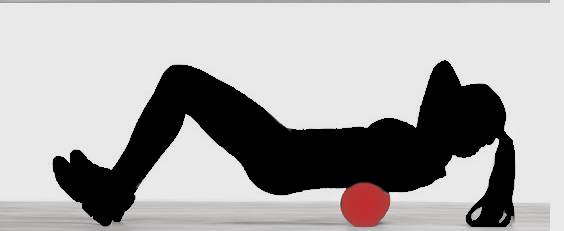
Foam roll extensions are a simple yet effective exercise designed to improve thoracic spine mobility and alleviate upper back stiffness. Here’s a brief guide on how to perform this exercise:
- Position the Foam Roller: Lie down on your back with a foam roller positioned underneath your upper back, near the shoulder blades.
- Support Your Head: Interlace your fingers behind your head to support your neck.
- Bend Your Knees: Keep your feet flat on the floor, knees bent, to stabilize your lower body.
- Extend Over the Roller: Gently extend over the roller for a deeper stretch for 5 seconds
Performing foam roll extensions regularly can help reduce tension, increase spinal flexibility, and improve overall posture.
Routine: Perform these exercises four times a week, incorporating a “Wall Posture Check” before and after stretches to monitor progress.
Wall Posture Check: How To Improve Posture
Correct Posture Should Be
- Touching the wall at the: Hips, Shoulder blades, back of your head.
- Your flattened hand should just fit between your lower back and the wall.
- Your head should touch the wall flat without having to extend your neck backwards. In other words, your nose should not move up or down so you can reach the wall with the back of your head.
Identifying Your Posture Type:
- Recognize patterns like Kypholordotic, Sway Back, or Forward Head posture. Regular exercise can lead to improvements.
Tracking Progress:
- Share your progress and experiences with these exercises by sending photos or comments. Your feedback is valued and contributes to a community of individuals dedicated to improving their posture.
Conclusion:
By dedicating time each week to stretch and strengthen key muscle groups, you can significantly improve your posture, reduce discomfort, and boost your confidence. Remember, consistency is key to seeing changes, and engaging with a community can provide additional support and motivation.
Tell us what you think in the comments below and like us on Facebook. I will answer all questions in the comments section here at this downtown Toronto Chiropractic clinic.
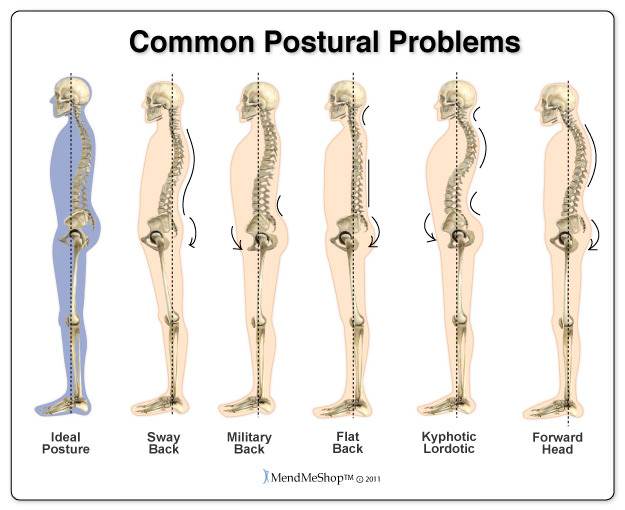





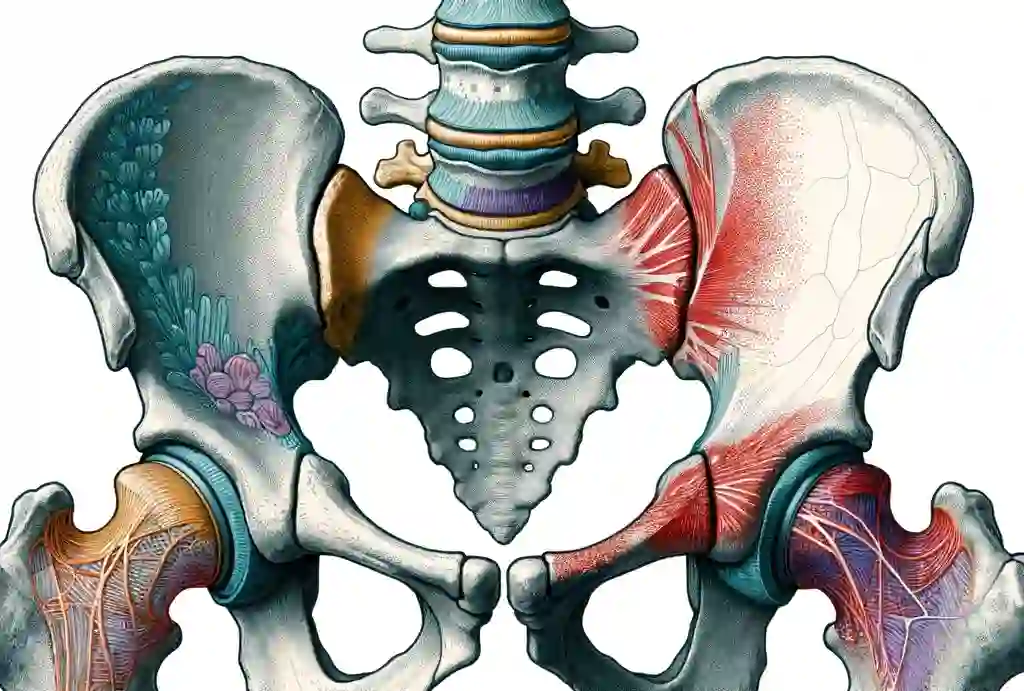


I have rounded shoulders and forward head position from poor posture at my desk. I have tried your exercises but when in prone cobra i feel a very strong contraction in my triceps and not my upper back, which is almost painful they contract so hard. Am I in the wrong position or is this due to a muscle tightness somewhere?
Author
Thanks for your question Emily. This is often due to a muscle spasm. Stretching out the triceps muscle before the exercise would be helpful. Also taking 200mg of Magnesium bisglycinate per day often helps muscle spasm. However, I have not examined you or gotten a proper history but that is what I often recommend when they have this exact problem.
You also have to keep in mind that if your forward head posture can sometimes cause the nerve to be irritated in the neck that leads to the triceps. If that is the case you will need professional help.
Hope that helps. The above is an opinion and not a recommendation.
If you have any more questions regarding your particular situation I will do my utmost to give you the best answer based on my experience, research for the articles that I do and the numerous seminars that I do. I’m always aiming to be the best chiropractor that I can be so that I can help you.
I suffered a Brachial plexus Injury in my left arm 10 years ago, due to which i have had muscle loss, Doctors informed that its not cut or Avulsion but just a nerve got stretched , over the years i have managed to regain some (60% ) strength, however raising my arm beyond my shoulder level, folding my arms are difficult tasks even to this day, any exercises to improve and regain complete strength would be of great help.
Author
Thanks for your question Vijay. From what you have told me you may have torn the nerves either at the nerve root or further down at the brachial plexus. If it was just a stretch you would have healed by now so it doesn’t sound right to me. That’s my opinion. Did your head and shoulder separate so that your neck was bending sideways like falling off a motorcycle and hitting an on-coming car causing your neck to stretch sideways or was it more of a sports injury with a similar mechanism of injury? In cases like that the nerve can be stretched but in more severe cases you often find out that the nerve has been torn.
If the problem is a tear of the muscles you don’t get full function back but surgery can help. I cannot tell without examining you. However, an MRI in the correct area can determine this.
Hope that helps your brachial plexus or nerve root/s and posture. The above is an opinion and not a recommendation.
Hi Dr. Ken,
I am a 75 year old woman. I suffer from severe kyphosis. I was told surgery is possible but it is a dangerous
Operation. On an x-ray my spine is like the letter C. Do you think these exercises could be of help to me.
Author
Thanks for your question Alice. Most likely that you have osteoporosis with fractures or you had Scheurmann’s disease as a child. So the problem is not likely due to a postural problem. So the posture will not likely be fixed. You could try the exercises but I would get the guidance of a professional as there are several possibilities for your pain. I am assuming you have pain and not likely contemplating surgery for cosmetic reasons.
Hope that helps your posture. The above is an opinion and not a recommendation.
Thank you for your response.. They thought I have osteoporosis but all bone density’s show I do not.They
Did put a brace on me as a child but unfortunately my mother removed it due to my crying. So I have two
Questions for you. First do you think these exercises will help my posture from becoming worse and could
It help with the pain. And second I Live in Montreal,is there any one you could recommend that would
Be very knowledgeable with my particular problem. I would so appreciate any advice you can give me.
Thanks so much, Alice.
Author
Thank you for your question, Alice. So now you are telling me you had this severe kyphosis as a child, or do you have scoliosis? If so the exercises will not help your posture. If your pain is due to previous Scheurmann’s disease or scoliosis that is still present that is causing your severe kyphosis is possible the exercises may help. However, I don’t recommend the exercises as the cause of your severe kyphosis can be many other diagnoses. My opinion is that you figure out the cause through your medical doctor before treating the problem.
Hope that makes sense and guides you to helping your posture.
Hello again. I experience an ache in my neck after doing these exercises. Is this normal or is it that I’m doing those exercises wrong?
How to do exercise#4? Where should I put the rolled towel, at the base of my upper back or at the upper part? Sorry if my English is confusing.
Author
Thanks for your question Nadj. It depends on the person. The foam roll, not a rolled up towel should be placed where the peak of your mid back curve is. For some, they have more of a curve at in the upper back for others it’s in the middle of the back for others, it’s a even lower down.
Hope that helps your posture. If you have any more questions this downtown Toronto chiropractor will be his best to give you a helpful opinion. The above is an opinion and not a recommendation.
After 2 years of physio and osteopathy treatment I have been told that my clavicle and shoulder pain is being caused by an impingment of the nerves whenever I raise my arm above shoulder height… my physio tells me it is a postural problem. I am 60 and very active but cannot swim or surf. Do you think the exercises will help as I have been given so much counter advice over the years and feel confused Jenny
Author
Thanks for your question Jenny. Usually if the shoulder has been treated for a long time the missing part is the neck. If the cause isn’t treated you won’t get better. It maybe that in your case the shoulder is the problem but that the neck is what I have found in practice.
The above is an opinion and not a recommendation.
Also, these exercises will not interfere with your physiotherapy.Hope that helps your posture and shoulder.
THANK YOU! THANK YOU! I’ve been to gyms, had personal trainers asked for help with my posture amd NOTHING. Google came up with your exercises and after only twice i can breathe better.
Author
You are welcome Harmony. Hope that improves your posture.
I’ve had poor posture most of my life, but after doing these exercises for a short while I’m already noticing a difference in my “posture checks.” Thanks for the tips!
Author
You are welcome Andrea.
I have a problem in walking as I fall backwards due to a arch backwards and when I raise my arms towards the sky I fall backwards even while standing. What can I do to solve this arms/shoulder oproblems ? Thank you.
Author
Thanks for your question Eugene. Sounds like you may have a different problem. Possibly with your balance centre. You need to consult a medical doctor that can examine you. A shoulder or arm problem will not cause this problem.
Hope that helps your falling.
Thank you so much for these exercises. I have kyphosis and lordosis. I have a very noticeable hump if I do not completely focus on my posture and even then I tend to over extend and it makes my lordosis bad and hurt ever more. I suffer from severe back pain when I stand too long. i had x rays taken, it showed no deformities or abnormalities in my spine. The doctors couldn’t help me so I took steps to help myself. I searched online and found some wall exercises that did help a bit but I could still notice a hump. I have been doing those for a year. Then I found your site and I am so happy! Just by doing these exercises for 3 days I notice how much easier it is to stand straight and how my bettermy back muscles feel. Its going To take time but I’m hopeful with your exercises I can improve my back to look better and feel better.
Author
Thanks for your comment Aimee. Glad your posture is improving with only 3 days of exercises.
Hope that helps your posture.
Your site is wonderful. When I do the above stretches with my left arm I feel faint and nauseus. I have pronounced lordosus and khyphosis.
Author
Thanks for your question Trish. You shouldn’t do that exercise if you feel faint or nauseous. You should definitely do the other exercises that do give you that feeling. You should do these exercises for your lordosis. https://www.bodiempowerment.com/posture-correct-your-exaggerated-low-back-arch/
Hope that helps your kyphosis and lordosis or rather your hyperkyposis and hyperlordosis.
Hey…I do have this back kyphosis…. And rounded upper back…I’m 21 years old..and yesterday I read your article…after doing these exercises …. I started feeling headache for like half n hour…so is it okay to do these exercises??… Course the rounded back is clearly noticeable and I do want to get rid of it ASAP…plzz do comment …I really need help
Author
Thanks for your comment. Why don’t you check with your local therapist, as I cannot check to see if you are doing the exercises correctly.
Hope that helps your posture.
hi
my name is Abey
and i have a rounded upper back but i am an architecture so i dont really have a time to do these exercises so can i get like a one day or week exercises to get a flat back
i will do anything please help me out
thank you
Author
Thanks for your question Abey. You need to work on it at least 6 days a week for 10 minutes a day. If you don’t want to put the time into it your posture won’t improve. You can’t improve without putting in the work, like most things in life.
Hope that helps your upper back posture.
hi again
i have another question
in how many days do i see the result
and in the number 4 exercise i don’t have the equipment (the roller) so is there any other exercise
Author
Thanks for your question Abey. It depends on how often you do the exercises, if you do the exercises correctly which is a big one as many do the exercises wrong and how much a forward posture you have and what the shape of your actual spine is.
As for the roller you can buy one on amazon.com. They are around $20.00. You can use a towel by rolling it up but it won’t be nearly as effective.
Hope that helps your posture.